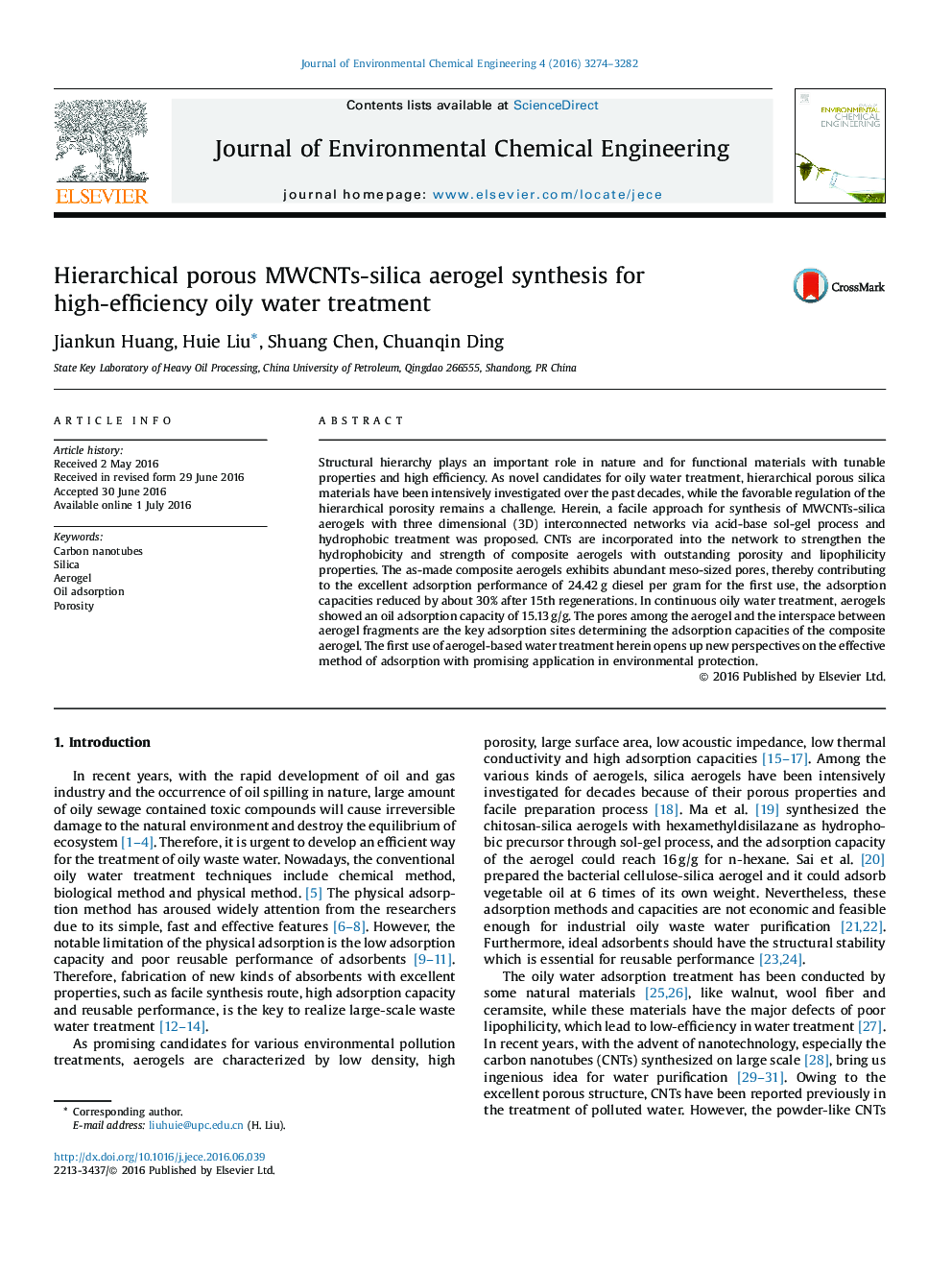| Article ID | Journal | Published Year | Pages | File Type |
|---|---|---|---|---|
| 221594 | Journal of Environmental Chemical Engineering | 2016 | 9 Pages |
•A facile synthesis of MWCNTs-silica aerogels via sol-gel solutions.•The formation mechanisms of monolith composite aerogels is depicted.•Composite aerogels show excellent adsorption capacities for various oil.•Static and dynamic adsorption water treatment method was first adopted.•We report a new strategy to analyze the adsorption capacities for aerogels.
Structural hierarchy plays an important role in nature and for functional materials with tunable properties and high efficiency. As novel candidates for oily water treatment, hierarchical porous silica materials have been intensively investigated over the past decades, while the favorable regulation of the hierarchical porosity remains a challenge. Herein, a facile approach for synthesis of MWCNTs-silica aerogels with three dimensional (3D) interconnected networks via acid-base sol-gel process and hydrophobic treatment was proposed. CNTs are incorporated into the network to strengthen the hydrophobicity and strength of composite aerogels with outstanding porosity and lipophilicity properties. The as-made composite aerogels exhibits abundant meso-sized pores, thereby contributing to the excellent adsorption performance of 24.42 g diesel per gram for the first use, the adsorption capacities reduced by about 30% after 15th regenerations. In continuous oily water treatment, aerogels showed an oil adsorption capacity of 15.13 g/g. The pores among the aerogel and the interspace between aerogel fragments are the key adsorption sites determining the adsorption capacities of the composite aerogel. The first use of aerogel-based water treatment herein opens up new perspectives on the effective method of adsorption with promising application in environmental protection.
Graphical abstractFigure optionsDownload full-size imageDownload as PowerPoint slide
